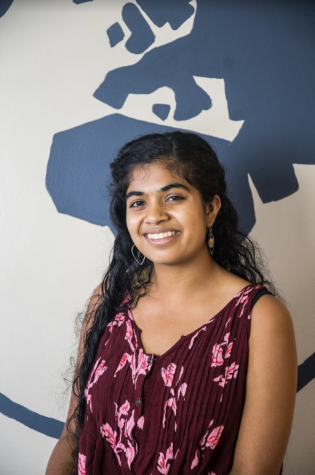High “Five”
December 6, 2015
The CHS world languages department has always been proud to receive numerous fours and fives, the top two scores, on the A.P. Spanish and French exams each year. Yet, the impact of these tough classes digs much deeper than the score and extends far beyond the walls of CHS.
For some students, the AP classes offer a way to take a college level class for credit or scholarship purposes, or even add a nice touch to their application. But for others, the classes are a way to deepen their understanding of the target language to the point of fluency.
The classes are for students who truly enjoy the language, as is proven by the rigorous curriculum. For those who are passionate, the class is not solely a means of preparation for the test. It is by the daily practice and extensive workload that the students’ confidence and knowledge of the target language and culture increases. With the classes taught only in Spanish or French, students are forced to adapt their thinking and expression to what they can say in that language. This pushes students to think “outside the box,” or in this case, outside the normal English.
This rigor includes intensive speaking, listening, reading and writing comprehension all brought to the classroom through skits, presentations, readings and literature. Teresa Schafer, who teaches the Spanish course, reaffirmed the extensive and intensive nature of this work by adding that, “all sources cannot be adapted [and] cannot be translated.”
Senior Gabby Boeger took Schafer’s AP Spanish last year. The intensity of the class is displayed through the workload.
“We would just get a topic one night and we would have to prepare for the presentation the next day,” Boeger said. “We transitioned from being able to use notes on the presentation to not being able to use notes and trying to go off your brain and incorporating your fluency.”
Yet, Boeger said it is this amount of commitment to the class and depth of the practice which pays off in the form of being able to speak the language fluently.
“The course itself is definitely worth it for people who want to be fluent in the language, but people should go into the class expecting a lot of work,” Boeger said.
Senior Sarah Widder took AP French during the 2014-2015 school year.
“The biggest benefit of the class was the confidence it gave me in my ability to handle almost any kind of speaking, listening or writing in French,” Widder said.
Current students also noted this, saying that in previous years they lacked the self-assurance to speak all in French, but this year they do not speak any English at all throughout the entire class period, which feels more natural.
Both classes are proven to be highly beneficial, with an overwhelming number of high scoring test results. However, for the two courses the class dynamic is difficult. The workload is intense and students are pushed to challenge themselves, as well as to exercise critical thinking.
The intensity is necessary preparation for the AP Exam. Both language tests assess the student’s skills of auditory and text comprehension, speaking ability when given a cultural comparison prompt, composition of a timed essay and an email reply in the target language. Besides what happens in class, students are encouraged to go beyond what is assigned, whether it be by listening to the radio, watching movies or speaking to friends in the language.
AP French teacher Laure Hartman believes that regardless of how students choose to practice outside of class, they should enjoy it, thus reaffirming that the difficult level of the class is well matched with a student that has a passion for the language.
When it comes down to the exam, the score represents both this focus on language fluency and the focus on understanding the cultures. Although one bad day may tweak one’s ‘proper’ score, Schafer said, “to get a five really shows love for the language.”
With a smaller number of students taking AP French, Hartman notes that her class has a family-like atmosphere in that the kids really get to know each other — in French, of course. Naturally, the AP students also have a strong relationship with their teacher, as they truly do want to learn and progress.
Students also learn a lot about the culture of the countries where the target language is spoken. The classes focus on explicit themes and the comparison between the cultural and political aspects of spanish speaking countries or francophone countries and the United States. For both languages, the themes are Global Challenges, Science and Technology, Contemporary Life, Personal and Public Identities, Families and Communities and Beauty and Aesthetics. Hartman added that “the topics are authentic and current,” and Schafer noted that her course is “really like a social studies course in Spanish.”
“Kids that get a five are likely to incorporate language into their future careers,” Schafer said. “You have that language anchored; it becomes part of your life.”
Despite the commitment required of the classes, both teachers noted how rewarding the courses are.
Schafer said, “I always try to tell students, regardless of level or fluency, not to give up because it’s such a wonderful experience to be able to widen your horizons…not only just [to] speak the language for your own.. but to understand other people, to also see things from their point of view. That’s how I personally live my life: with multicultural people around me.”
Schafer is sure that the ability to speak another language will enhance one’s life through her own experience. Speaking Spanish, French and English, Schafer said that each time she mastered a skill, it made her see the world in a new, unique way.
“It had new colors, and new tints, and new everything, because the world is so much richer,” Schafer said. “The language just changes the way you think.”







